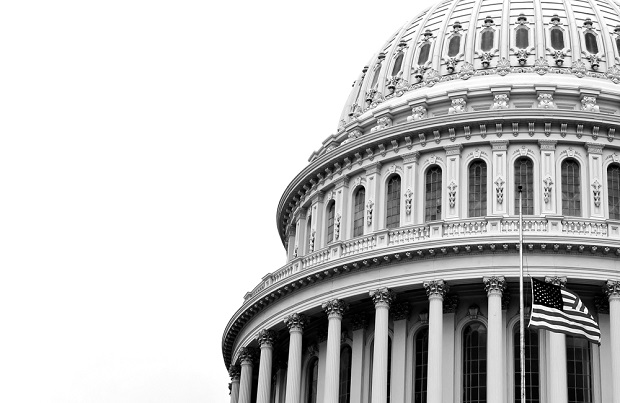As the COVID-19 pandemic continues its course, companies are cutting costs and working hard to stay in business. It is a difficult situation for everyone, but plan sponsors have the burden of evaluating COVID-19's impact on their organizations as well as their employees.
In late March, Congress provided plan sponsors and participants some much-needed support through the $2 trillion Coronavirus Aid, Relief and Economic Security (CARES) Act. The act provides direct financial aid to millions of Americans as well as companies of all sizes. It includes several provisions that give retirement plan participants increased access to assets in their 401(k), 403(b), individual retirement account (IRA) and other qualified retirement accounts.
The law also eases repayment rules for distributions or loans from these accounts. In addition, the CARES Act gives organizations flexibility by extending due dates on certain tax-related filings and payments, as well as providing pathways for some plans to suspend employer contributions.
Now is the time for employers to carefully review the Act's fine print to determine how its provisions can benefit their organizations, their plans, and their participants.
Coronavirus-related distributions and repayments
One of the more significant changes affecting retirement plans is the creation of coronavirus-related distributions (CRDs). Under the CARES Act, participants who have been affected by the coronavirus can withdraw the lesser of $100,000 or 100 percent of their entire vested account balance without paying the standard 10 percent early withdrawal penalty.
Participants that have been impacted by the coronavirus should be 1) diagnosed with the virus by a test approved by the Centers for Disease Control and Prevention, 2) whose spouse or dependent is diagnosed with the virus by a test approved by the CDC, or 3) who experiences adverse financial consequences as a result of being quarantined, being furloughed or laid off or having work hours reduced due to the virus, being unable to work due to lack of child care due to the virus, closing or reducing hours of a business owned or operated by the individual due to the virus.
CRDs can be taken on or after January 1, 2020, and before December 31, 2020. Importantly, plan sponsors can rely on participants to certify their eligibility to receive a CRD; it isn't up to the employer to make this determination.
CRDs are exempt from the standard 20 percent withholding rule for early withdrawals. Under normal hardship withdrawal rules, employees taking a distribution could access only the lesser of $50,000 or 50 percent of their vested account balance, and they would have to pay a 10 percent early withdrawal fine and pay the 20 percent withholding.
Normally, participants aren't permitted to repay hardship withdrawals, but the CARES Act allows repayments for CRDs. Participants now have up to three years to repay the withdrawal amount to any of their existing eligible retirement plans—not just to the one from which they withdrew funds—and the repayments can be made as a lump sum or in installments.
If the withdrawal isn't repaid within three years, it is treated as ordinary income, but the tax on the CRD can be spread over three years.
It is important to recognize that employers aren't required to permit CRDs from their plans. Employers should examine their plan documents and decide if they want to offer this benefit.
If they do elect to offer such withdrawals, plan sponsors can do so immediately, and they generally have until the end of the first plan year beginning on or after January 1, 2022, to amend their plan documents.
Loans and repayments
The Act's changes regarding loans from qualified retirement plans largely parallel the changes related to CRDs. The CARES Act increases the permissible loan amount to the lesser of $100,000 or 100 percent of the vested account balance for loans made on or before September 23, 2020 for qualified participants.
Qualified participants for these loans are defined the same as the participants for the CRDs. Qualified participants who have existing loans with payments due between March 27, 2020 and December 31, 2020 can delay those payments penalty-free for up to one year, although interest will continue to accrue on these delayed payments.
As with CRDs, employers aren't required to offer the more accommodating loan provisions created under the CARES Act. Employers that choose to offer loans must amend the plan document to reflect the change by the end of the first plan year beginning on or after January 1, 2022.
Another option is that employers can also choose to keep the loan limit at $50,000 but adopt the Act's extended repayment plan; again, this would require amending the plan document.
Suspending plan contributions
While headlines might make it seem like every company is suspending employer matching contributions, only 16 percent of plan sponsors surveyed by the Plan Sponsor Council of America said they plan to do so as of April 14, 2020. Still, suspending contributions can be a viable short-term fix to an organization's cashflow issues. However, before deciding to suspend contributions, plan sponsors should closely review their plan documents to understand their options.
Plan sponsors with discretionary, non-elective matching contributions can suspend them immediately without amending plan documents. Suspending these contributions will likely be a jolt to plan participants, so it is imperative that employers develop a thoughtful communication strategy before going ahead with such a plan.
Safe Harbor 401(k) plans carry additional requirements related to suspending contributions. To suspend contributions, safe harbor plan sponsors need to be operating at an economic loss or have a statement in their annual safe harbor notice that reserves the right to amend the contribution schedule.
Even if one of these two requirements are met, plan sponsors must give participants at least 30 days' notice before suspending contributions, plus enough time for participants to make adjustments to their accounts.
Importantly, plans that suspend contributions will lose safe harbor status for the year and will have to perform nondiscrimination ADP/ACP testing.
Filing and tax payment deadline changes
The Act gives the Labor Department authority to delay deadlines covered under the 1974 Employee Retirement Income Security Act (ERISA). During previous natural disasters, such as Hurricane Harvey in 2017, the DOL has been very responsive in pushing deadlines. But only a handful of deadline changes have been made thus far in response to the COVID-19 pandemic.
Plan sponsors for 403(b) plans now have until June 30 to submit their pre-approved plan documents, providing an additional 90 days for plan sponsors to amend their plans.
In addition, defined benefit plan sponsors can delay contributions due in calendar year 2020 to January 1, 2021. Any delayed contributions must be increased by interest accrued between the original due date and the date of delayed payment.
The IRS has extended deadlines to July 15 for any tax payments or related filings due April 1 through July 14. This includes certain filings due to the Pension Benefit Guaranty Corp. (PBGC), as well as individual personal tax filings and payments.
While this is welcome relief, it doesn't help defined benefit plans that operate on a calendar year, for whom Form 5500 is due on July 30. Several industry groups are lobbying Congress to extend the Form 5500 filing date to October 15, alongside other requests, including an extension for certain plan participant notices.
Deadline extensions are very fluid at this point, so it is imperative that plan sponsors continue to watch for changes to due dates for payments, tax filings and required notices.
Keep calm and read the fine print
Congress passed the Act to provide plan sponsors and participants flexibility in navigating this unprecedent period of uncertainty. But it is important to reiterate that this flexibility includes giving plan sponsors the option of whether to offer these new benefits related to withdrawals and loans.
As a result, plan sponsors need to carefully review not just the language of the CARES Act, but also their existing plan documents to determine how to proceed. Similarly, plan sponsors need to be thoughtful in communicating what these changes mean to their participants, who are facing major uncertainty of their own.
As in any crisis, thinking about the bigger picture while still paying close attention to the details is critical. We encourage plan sponsors to carefully review the key provisions that relate to retirement plans, formulate an approach that works best for the organization and its participants and employ a thoughtful communication strategy throughout this crisis.
 Beth Garner is an Assurance Partner at BDO and the national practice leader for BDO's Employee Benefit Plan (EBP) audit practice. With more than 20 years of accounting experience, including significant experience serving employee benefit plans and the financial institution industry, she heads BDO's national EBP team and has EBP audit clients in multiple cities in the U.S. During her time at BDO, Beth has also been involved in several Employee Retirement Income Security Act of 1974 (ERISA) consulting projects. Beth is a member of the American Institute of Certified Public Accountants, Georgia Society of Certified Public Accountants, and Women in Pensions Network – Atlanta Chapter.
Beth Garner is an Assurance Partner at BDO and the national practice leader for BDO's Employee Benefit Plan (EBP) audit practice. With more than 20 years of accounting experience, including significant experience serving employee benefit plans and the financial institution industry, she heads BDO's national EBP team and has EBP audit clients in multiple cities in the U.S. During her time at BDO, Beth has also been involved in several Employee Retirement Income Security Act of 1974 (ERISA) consulting projects. Beth is a member of the American Institute of Certified Public Accountants, Georgia Society of Certified Public Accountants, and Women in Pensions Network – Atlanta Chapter.

